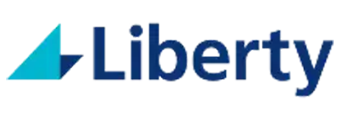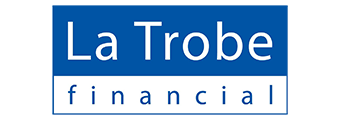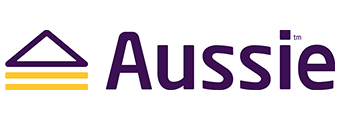Types of bad credit home loans
Bad credit home loans don’t just come in a one size fits all product. Here are the types of bad credit home loans and debt agreements you should be aware of before choosing a lender.
1. Paid and unpaid defaults home loan
Paid and unpaid defaults home loans are offered to borrowers who have defaults on their credit file. These fall into two categories:
Paid defaults: defaults that you’ve paid in full
Unpaid defaults: defaults that you haven’t paid in full
A default on your credit file usually illustrates you have an overdue account: personal loan, credit card bill, utility bill or phone bill fall into this category. If a payment is 60 days overdue, or if the lender has been unable to contact you, this will show up on your credit report. Defaults are warning signs for lenders and most will knock your application back based on your inability to pay your debts.
2. Discharged bankrupt home loan
Borrowers who were bankrupt and are now discharged can apply for a discharged bankrupt home loan. There are several Australian lenders willing to lend money to discharged (an automatic process of the law which releases the bankrupt person from bankruptcy) bankrupts who are looking to buy a property.
3. Part 9 debt agreement
Part 9 debt agreements are given to borrowers who entered a Part IX Agreement and have completed the agreement.
This agreement is a legally binding agreement between you and your creditors and can be a flexible way to come to an arrangement to settle debts without becoming bankrupt. Once the debt agreement is fulfilled, you’ll be discharged from the agreement, however a Part 9 does remain on your credit file for up to seven years.
There are Australian lenders who will consider your mortgage application if you have a completed Part IX Agreements on a credit file.
4. Tax debt home loan
If you have a large debt with the Australian Taxation Office (ATO), this type of bad credit home loan could be for you. In this case, the ATO debt is added to the mortgage, leaving the borrower clear from any ATO debt. However, as the debt is rolled into the home loan, you’ll now be paying interest on that debt. Generally, if you communicate with the ATO directly, it will allow repayment plans with minimal interest payable, if any.
5. Debt consolidation home loan
If you have unmanageable small debts that have mounted up such as personal loans and credit cards, a debt consolidation home loan is a type of bad credit home loan that could well suit your needs. It is common practice in Australia for people to roll multiple forms of unsecured debt into their mortgage, creating one monthly repayment potentially at a lower interest rate than one found on a personal loan or credit card.
Should I apply for a home loan if I have bad credit?
If you have a bad credit history, you should carefully consider your situation and circumstances before deciding whether or not to take out a home loan.
By not considering your history, you may be at risk of mortgage stress and unable to make repayments. Mortgage stress is generally defined as more than 30% of income going towards paying off the mortgage. However, if you do decide to take out a loan, be mindful that bad credit home loans usually come with higher interest rates making your repayments automatically higher than they would be for a standard home loan.
A better option might be waiting until you have improved your credit history, or have had the opportunity to build up your savings. In doing so, you will be in a better position to apply for a standard home loan. However, the opposite argument is that the property market can move quickly and getting your foot in the door with a bad credit home loan to demonstrate you can pay off the debt could be a viable option.
Each time you apply for any type of loan, it is marked on your credit report, so it’s advisable to only apply for ones you think you will be approved for. Applying for a number of loans in a short period of time may have a negative effect on your credit score.
How can I improve my credit score?
If you have a low credit score, there are steps you can take to improve it. It won’t increase your score immediately, but you need to start somewhere.
Some examples of how to improve your credit score are:
Check you credit report regularly to make sure the information is correct. It doesn’t cost anything to update it or to remove an incorrect listing.
Don’t be late with any bills or loan repayments. To make sure that you never miss a payment, you could set up direct debit from your account or put reminders in your calendar.
Limit your loan and credit card applications. The more you have listed, the less your credit score will be.
Look into reducing your credit limit where possible on any credit cards. A lender will generally consider the maximum credit limit and will reduce your borrowing power accordingly.
How to get a bad debt home loan approved
When applying for a home loan with bad credit, keep the following in mind to help you get approved:
1. Get access to a copy of your credit file
If you have a copy of your credit file, you will know exactly what information the lender can see about your credit history. If you are aware of what is in that file, you can discuss why you have the negative marks on your file. You are generally permitted one free copy of your credit file each year, however some credit reporting agencies own separate websites that make this more accessible and easier than ever.
2. Settle any outstanding debts
Your new lender will want to know what steps you are taking to make sure you don’t slip back into having a bad credit rating. By settling any outstanding debts, you are showing that you can manage your money from here on.
3. Could a credit repair service help you?
Incorrect negative credit listings can be removed from your file. A credit repair specialist can help you with this. Once these negative listings are removed, you may be able to apply for a regular home loan.
4. Apply for a loan with a specialist lender
Certain specialist lenders can help you with a bad debt home loan. They will assess your credit history and determine if you are capable of repaying a new loan.
5. Don’t apply for too many loans in a short amount of time
All your loan applications are recorded on your file, so don’t put in too many applications or make numerous enquiries in a short period of time. Too many applications and enquiries can present a red flag to prospective lenders.
6. Discuss your bad credit history in honest terms
All non-conforming, subprime, or alternate lenders will look at all the red flags in your credit history. If you are able to discuss with them in an honest way how you ended up in each situation, it may work to your advantage. Trying to hide facts and being dishonest could lead to your application being declined.
7. Avoid applying with a spouse who has bad credit if possible
Even though applying on your own may mean your borrowing capacity is reduced, it is sometimes a better option to have a standard loan with a regular bank rather than having to go through a bad credit lender simply because your partner has bad credit history.
8. Eliminate all other debts
If you have no debt elsewhere, your chances of being approved will be a lot higher. Paying them off also demonstrates good habits and that you’ll be able to pay off the new home loan.
Who offers bad credit home loans?
Bad credit home loans aren’t typically offered by the big banks. It’s usually specialist lenders that will offer this type of home loan.
Here is a list of lenders who specialise in bad credit home loans:
- AusWide Bank (Formerly Widebay Australia)
- Adelaide Bank
- Bluestone Mortgages
- La Trobe Financial
- MKM Capital
- RedZed Lending Solutions
- Resimac
What are the pros and cons of bad credit loans?
Bad credit home loans give self-employed borrowers an alternative way to certify their income. These loans can carry extra costs, so it’s important to review and understand the criteria, features and rates of several products before making your choice.
Here you’ll find all the relevant information about different bad credit home loans from a wide range of banks and lenders. It’s never been easier to compare and save.
Advantages
- You could get a home loan even after the big bank declines your application
- Specialist lenders may overlook low credit rating and assess other parts of your application
- If repayments are made on time, you may be able to negotiate a lower rate or eventually refinance
Disadvantages
- Higher interest rate than standard loans
- A larger deposit is usually required in comparison to a standard loan
- There may be stricter repayment conditions
Glossary of Terms
| Application | The process of applying for a loan, which records relevant information about the prospective borrower. |
|---|---|
| Asset | Anything valuable owned by an individual that a lender will take into account when assessing a home loan. |
| Bad credit | A negative credit rating due to a debtor failing to make repayments on bills and loans etc. Bad credit can make it difficult to apply for further loans. |
| Bad debt | Debt that cannot be collected and is worthless to the creditor. |
| Bankrupt | When a person or institution is unable to repay debts they owe to creditors. |
| Budget | A detailed plan of income and expenses over a defined period of time. A budget can help you manage costs and repayments. |
| Contract | A binding agreement between two or more parties. |
| Credit | Where a borrower enters into an agreement with a lender to receive something of value in exchange for repayment (usually with interest) at a later date. |
| Credit report | A credit report is a record of a person's credit history and includes things like their credit rating, the credit products they hold, and their repayment history. |
| Debt | The amount of money (borrowed funds) a borrower must repay to the lender. |
| Debt consolidation | When you roll multiple loans into a single loan, usually at a lower periodic payment and interest rate. |
| Default | Inability to pay a debt by its due date. |
| Finance | Provision of funds and capital. |
| Grace period | A period of time in which the borrower is not required to make payments on a debt. |
| Home loan | The money borrowed for a residential mortgage secured by a primary residence. |
| Instalment | The scheduled payment a borrower will make to a lender. |
| Lender | Those who supply funds to borrowers. |
| Liability | The debts or financial obligations of a person or company. |
| Liquidate | A company unable to pay off its debts will shut down and sell assets to the open market. |
| Loan | Funds that are borrowed and repaid with interest. |
| Loan term | Agreed terms of a loan including interest rate, fees and charges. |
| Low doc loan | A loan requiring a lower level of verification documents. |
| Mortgage | A legal document that requires a borrower to pay back a property to the lender as security for the payment of a debt. |
| No doc loan | A loan requiring no documentation or verification. |
| Rate | The annual interest on a loan. |
| Refinance | Refinancing your mortgage means that you are trading in your old mortgage for a new one with better terms. |
| Repayment plan | An agreement between a lender and a borrower to help the borrower repay installments. |
| Self-employed | Individuals who operate as sole proprietors. |
| Second mortgage | When the loan on one mortgage is secured against another. |
| Secured loan | A loan that is backed by collateral. |
| Settlement | The signing of loan and mortgage documents to complete the loan transaction. |
| Short term loan | A loan that will be repaid within a year. |
| Term | The period of time during which loan payments are made. |
| Underwriting | Verification of data and approval of a loan. |
| Unsecured loan | A loan that is obtained without collateral. |
| Variable-rate | An interest rate that changes with the market. |
| Write off | When a loan is not collectible. |





